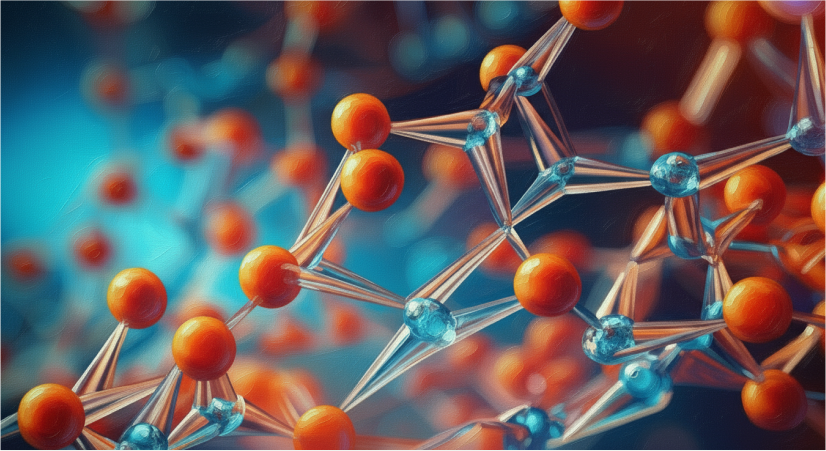by Team Pharma Now
7 minutes
Exploring Peptide-Based Innovations in Dermatology Research
Dermal research peptides show promise in collagen repair, host defense, and scaffold design for skin regeneration studies.

The realm of dermatological research is witnessing an invigorated focus on short-chain peptide molecules—termed skin‑targeting or research peptides—for their intriguing physicochemical and biological properties. These peptides, many derived from endogenous or synthetic sources, may support cellular communication, tissue regeneration, and host defense within the mammalian model's dermal niche. Here, we explore multiple classes of peptides, their mechanistic plausibility, and speculative research implications, strictly within research-relevant contexts.
Overview of Dermal-Targeting Research Peptides
Research on peptides in dermatological contexts frequently falls into three categories: collagen-derived matrikines, antimicrobial peptides, and hydrogel-forming self-assembling peptide scaffolds. Each grouping possesses distinct properties that might promote extracellular matrix remodeling, microbial defense, and barrier restoration. Investigations purport that these peptides coordinate complex signaling networks to support dermal regeneration, inflammatory modulation, and structural reformation.
Collagen‑Derived Peptides: Matrikine Signaling in Dermal Repair
One of the most studied peptide motifs in dermatologic research is palmitoyl pentapeptide‑4 (also known under the trade name Matrixyl), a matrikine linked to extracellular matrix renewal. Studies suggest that this peptide may stimulate collagen synthesis pathways and upregulate genes associated with the production of extracellular matrix components, thereby supporting fibroblast activity and remodeling of tissue architecture.
Additionally, the tripeptide copper complex GHK‑Cu—a carrier peptide complexed with copper ions—has been reported to modulate collagen synthesis, regulate metalloproteinases and their mitigators, and promote angiogenesis and matrix formation in wound-relevant contexts. Research indicates that GHK‑Cu may function as a chemotactic cue for immune and fibroblast‑type cells within dermal tissue repair models.
Together, matrikine peptides are believed to regulate the neosynthesis of extracellular macromolecules while coordinating matrix turnover through the regulation of enzymes. In research models involving wound-recovery-related conditions, these peptides may support granulation tissue formation and structural regeneration.
Antimicrobial Peptides: Host‑Defense Molecules with Multifunctional Properties
A second class of interest comprises cationic antimicrobial peptides—such as beta-defensin 2 and amphibian-derived wound-healing peptides—that are noted for their antimicrobial, immunomodulatory, and pro-regenerative activities.
Beta-defensin 2, a dermatology-associated peptide, may represent a defense molecule that interacts with microbial membranes while also contributing to immune signaling within the skin microenvironment. Although often studied for their potential to suppress infection, research indicates that these peptides may also modulate inflammatory cytokine profiles and support barrier function.
Amphibian-derived peptides—such as AH90, Ot‑WHP, and peptides from salamander species—have been isolated from amphibian skin secretions and investigated in dermatologic research models. Research indicates that these peptides may accelerate re-epithelialization, promote macrophage and neutrophil cross-talk, and activate key signaling pathways (e.g., MAPK, NF-κB, and TGF‑β/Smad) to orchestrate keratinocyte migration and fibroblast transformation into myofibroblast phenotypes.
This type of multi‑pathway modulation may ultimately support tissue remodeling, barrier restoration, and wound closure in experimental dermal repair contexts. Thus, antimicrobial peptides might offer dual-action properties—microbial suppression and regenerative signaling—rendering them attractive tools for probing cutaneous resilience and recovery dynamics.
Peptide-Based Hydrogels and Scaffold Systems
A further domain encompasses self-assembling peptide hydrogels, often designed to mimic collagenous or extracellular matrix frameworks. These materials may serve as biomimetic scaffolds to support cell migration, proliferation, and tissue regeneration.
Reviews indicate that peptide‑based hydrogels are under intense exploration for chronic wound‑like scenarios. Such systems may be engineered for biodegradability, adjustable mechanical strength, and pH responsiveness to support remodeling kinetics. Combined with additives such as bioactive glass or ceramics, these hydrogels may stimulate regenerative cellular activity while offering structural support within research frameworks.
In select systems, peptide-reinforced hydrogels may form a provisional matrix that supports vascular ingrowth, fibroblast activity, and inflammatory modulation—all of which may influence regenerative trajectories in dermal tissue research.
Mechanistic Synergies and Pathway Integration
Although each peptide class may operate via distinct molecular mechanisms, potential synergy arises when considering combinatorial implications within research models:
- Matrikine peptides may induce the expression of extracellular matrix genes, collagen deposition, and fibroblast proliferation.
- Copper carrier peptides may serve as modulators of metalloproteinase balance and angiogenic signaling.
- Antimicrobial host defense peptides may regulate inflammatory cytokine networks and barrier homeostasis while simultaneously suppressing microbial load.
- Hydrogel scaffolds may provide a structural niche that supports cell migration and matrix deposition.
It has been hypothesized that combining matrikine peptides with scaffold systems may amplify regenerative signaling, while the integration of host-defense peptides might suppress local inflammation and infection-like signals. Such integrated approaches might illuminate how complex peptide-based environments shape tissue restoration trajectories.
Concluding Perspectives
In aggregate, research peptides with dermal cell‑targeting implications represent a fertile investigative avenue, bridging molecular signaling, scaffold design, and tissue regeneration. Collagen-derived matrikines, copper carrier peptides, antimicrobial host‑defense peptides, and self‑assembling hydrogels each offer distinct and potentially synergistic properties for exploring structural and functional repair mechanisms in the dermal organ system of mammalian models.
While current literature primarily reports promising data in controlled environments, the integration of multi‑modal peptide systems holds promise for elucidating foundational principles of dermal repair, barrier resilience, and tissue regeneration. Continued refinement of peptide design, scaffold engineering, and pathway mapping may yield powerful insights into dermatological research and tissue engineering domains. Researchers go here for more relevant peptide data.
References
[i] Dupont, J., & LeRoith, D. (2001). Insulin and insulin-like growth factor I receptors: Similarities and differences in signal transduction. Hormone Research in Paediatrics, 55(2), 22–26. https://doi.org/10.1159/000048009
[ii] Pickart, L., & Margolina, A. (2018). Regenerative and protective actions of the GHK-Cu peptide in the light of the new gene data. International Journal of Molecular Sciences, 19(7), 1987. https://doi.org/10.3390/ijms19071987
[iii] Lodén, M., & Maibach, H. I. (2016). Treatment of dry skin syndrome: The art and science of moisturizing. Springer. [Chapter includes peer-reviewed studies on Matrixyl effects on fibroblast stimulation.
[iv] Harder, J., Bartels, J., Christophers, E., & Schröder, J. M. (2001). A peptide antibiotic from human skin. Nature, 387(6636), 861–862. https://doi.org/10.1038/43183
[v] Cheng, T. Y., Chen, M. H., Chang, W. H., Huang, M. Y., & Wang, T. W. (2013). Neural stem cells encapsulated in a functionalized self-assembling peptide hydrogel for brain tissue engineering. Biomaterials, 34(8), 2005–2016. https://doi.org/10.1016/j.biomaterials.2012.11.042





